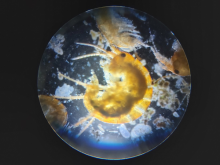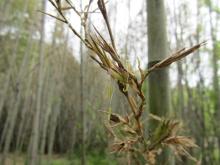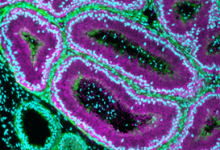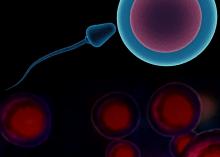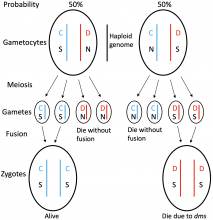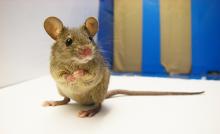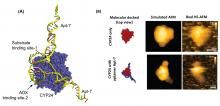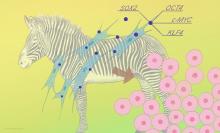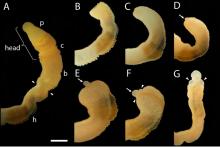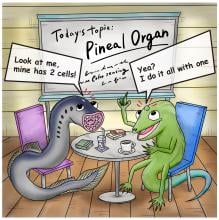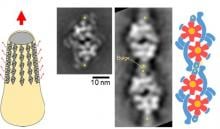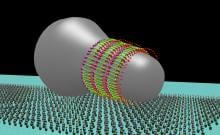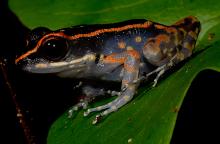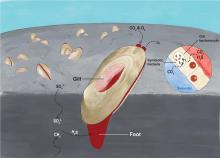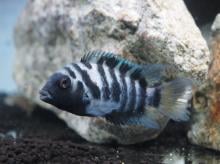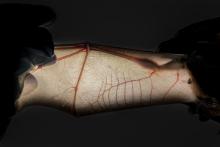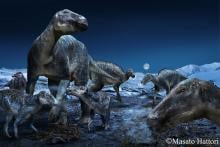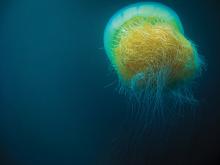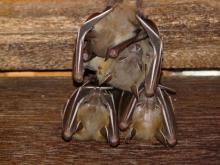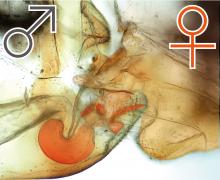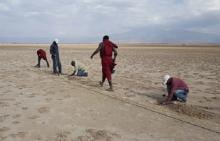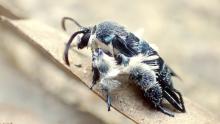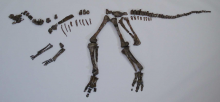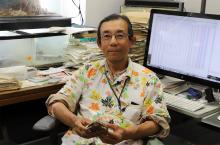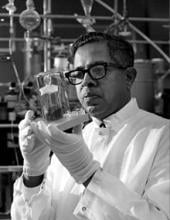Biology Evolutionary biology
News
09 Nov 2023
New shrimp species in ancient hot spring, Super sprouts, How "warm-ups" work, New antiviral candidate, Solving voltage decay and from our blog: A sustainable future shines in TIE 2023. Read all in the latest Editor's Choice.
13 Oct 2023
A new amphipod species thrives at record temperatures in nearby hot spring pools of an ancient Inca city, defying norms for these typically cold-dwelling animals. Unraveling its key adaptations can give clues for the survival of other freshwater creatures in our warming world.
29 Aug 2023
A long-lived monocarpic species of bamboo, Phyllostachys nigra var. henonis, only flowers once every 120 years before it dies. The upcoming flowering event for this species does not bode well for its continued long-term survival, as most flowers are not producing viable seeds.
19 Jun 2023
A key protein for sperm maturation identified, Understanding gel formation, Urine test predicts organ diseases, A laser drills holes in a graphene film. Plus in our blog - The frogs of Borneo: more than just a race. Read all in the latest Editor's Choice.
11 May 2023
A new group of mitochondrial viruses confined to the arbuscular mycorrhizal fungi Glomeromycotina may represent an ancestral lineage of mitoviruses.
11 May 2023
Researchers from Osaka University identified a new protein, NICOL, and described its crucial role in the maturation of sperm, which itself is necessary for male fertility. Mice who lacked this protein were sterile. Such a discovery may have implications for the development of male contraceptives.
28 Feb 2023
Two novel hypotheses address the “two-fold cost of sex”: one of the biggest enigmas in the evolution of sexual reproduction.
19 Aug 2022
Two novel hypotheses have been proposed that address the “two-fold cost of sex”: one of the biggest enigmas in the evolution of sexual reproduction.
16 Jun 2022
Scientists have revealed the genetic structure and diversity, and inferred the population history, of the wild house mouse across Europe and Asia.
25 May 2022
Researchers at Kanazawa University in collaboration with teams from Toyama Prefectural University and BioSeeds Corporation report in ACS Applied Materials & Interfaces the identification of a molecule with enhanced antiproliferative activity in cancer cells. The underlying biomolecular mechanism is the inhibition of an enzyme that is overproduced in several types of cancer.
25 Apr 2022
Examination of endangered species’ stem cells unveils ancient genetic links between mammals.
15 Feb 2022
Better understanding of regeneration in hemichordates may eventually lead to advances in reparative medicine
15 Sep 2021
Using the lamprey, researchers from Japan analyzed the photosensory mechanism of the pineal organ, also called the pineal gland, in non-mammalian vertebrates and discovered a novel mechanism of pineal color discrimination (two-cell system) in which two types of photoreceptor cells, each containing two different opsins, are used to detect color. This discovery may provide insight into the evolution of color detection in other animals, including color vision in humans.
20 Jul 2021
Using electron microscopy and high-speed atomic force microscopy, researchers show the internal molecular motor behind the gliding mechanism for Mycoplasma mobile to consist of two ATP synthase-like molecules. Sharing a similar structure with ATP synthase suggests a common evolutionary ancestor. This synthase-like ATPase is challenging the origin of cells and proteins themselves.
24 May 2021
In collaboration with Kanazawa University, researchers from Osaka City University used high-speed atomic force microscopy (HS-AFM) to visualize at the nanometer level the movement of individual particles within the parasitic bacterium Mycoplasma mobile. After confirming the outline on the surface of the cell structure in an immobilized state with previous data gathered from electron microscopy, the team succeeded in visualizing the real-time movements of the internal structure by scanning the outside of the cell with HS-AFM.
10 May 2021
A new study on frogs shows gene flow and population structure should be considered to determine if morphologically similar and genetically distinct animals comprise separate species.
29 Mar 2021
A study led by scientists at Hong Kong Baptist University (HKBU) has decoded the genomes of the deep-sea clam (Archivesica marissinica) and the chemoautotrophic bacteria (Candidatus Vesicomyosocius marissinica) that live in its gill epithelium cells. Through analysis of their genomic structures and profiling of their gene expression patterns, the research team revealed that symbiosis between the two partners enables the clams to thrive in extreme deep-sea environments.
19 Mar 2021
Through a series of prosocial choice tasks, researchers reveal prosocial and antisocial characteristics in male convict cichlid fish. The fish distinguish between female breeding partners, unknown females, and rival males by adjusting their actions to either provide food for both them and the females or avoid providing food for the rival males.
26 Oct 2020
Study confirms bats adopt multiple strategies to reduce pro-inflammatory responses, thus mitigating potential immune-mediated tissue damage and disease. Findings provide important insights for medical research on human diseases.
27 May 2020
A re-analysis of dinosaur skulls from northern Alaska suggests they belong to a genus that lived over a broad latitudinal range extending into the Arctic.
13 Jan 2020
Analysis of the Nomura’s jellyfish genome has identified unique genetic adaptations that helped them become early, successful multi-cellular predators.
17 Dec 2019
A team of researchers from the National University of Singapore has found that the effective population size and genetic diversity of Singapore’s Cynopterus brachyotis, believed to remain widely unaffected by urbanisation, has shrunk significantly over the last 90 years – revealing that the current biodiversity crisis may be much broader than widely assumed, affecting even species thought to be common and tolerant of fragmentation and habitat loss.
21 Dec 2018
In a group of bark lice, a penis has evolved twice – in the females. In their nutrient-scarce environment, “seminal gifts” are an incentive for females to force mating, leading to the co-evolution of female penises and male vaginas.

19 Nov 2018
A variety of animals have male-specific ornament traits and these ornaments are favored by female choice. Which male traits are preferred by females often varies among females. Genetic mechanisms that create and maintain variations in female preference has been one of the central questions in evolutionary ecology.

26 Jun 2018
Researchers show that female nipples are more diverse in size than male nipples – going against assumptions from evolutionary biology.
29 Jan 2018
Natural evolution has given us opposable thumbs, the ability to walk fully upright and brains that can reason. Now, scientists are poised to revolutionise fields from drug discovery to goods manufacturing by further harnessing evolution’s power in the laboratory.
22 Jan 2018
Geophysical modeling of one of the world’s most important fossil sites reveals the history of the site where early humankind evolved.
13 Dec 2017
Entomologist Gets First-ever Footage of the Lost Species in Primeval Jungles of Malaysia.
09 Jun 2017
Nipponosaurus sachalinensis - a controversial hadrosaurid dinosaur whose fossilized skeleton was unearthed in southern Sakhalin in 1934 - is found to be a valid taxon and a juvenile that had not reached sexual maturity.
Events
Sorry, nothing coming up for this discipline
Researchers
Dr. Eisuke Hasegawa is an Associate Professor at the Graduate School of Agriculture, Hokkaido University, where he heads the Animal Ecology Laboratory. His research interests include animal ecology; evolutionary biology; natural selection; sociality; and ethology.
Dr. Yukio Yasui is an Associate Professor at Kagawa University. He has dedicated his research work to ecology, ethology and evolutionary biology studies, with his more recent work on the evolution of sex.
Assistant Professsor Lauren Sallan is a fish paleobiologist who uses big data — the fossil record — to study how some species win and others lose. Her multiple TED Talks on the evolution of fishes, mass extinction and paleontology have received over 3 million views.
Mohd Zacaery Khalik is a lecturer at the Universiti Malaysia Sarawak and is pursuing his Ph.D with the Naturalis Biodiversity Center and Leiden University in The Netherlands. He researches the evolution of snails in Borneo.
Giants in history
Cyril Andrew Ponnamperuma (16 October 1923 – 20 December 1994) was a Sri Lankan chemist who was interested in the origins of life on Earth. His research in chemical evolution showed how inanimate molecules may have given rise to the building blocks of life – a process known as abiogenesis.




